Learn how to make Tunisian double stitches in this quick tutorial, some variations on Tunisian crochet double stitches, plus a bit about what they are useful for.
Tunisian double stitches are taller than Tunisian simple stitches, almost twice as tall as the most basic stitches in Tunisian crochet, in fact.
They are easily made by adding a yarn-over on the hook before picking up a loop in the stitch on the row below.
Follow along with the step by step tutorial below on making this stitch.
Begin with a foundation row, any type you like. You could make the foundation row with double stitches as well.
Materials
To make this swatch, you will need yarn (start with a wool or an acrylic if you are a beginner in Tunisian crochet) and a hook that’s 2-3 mm thicker than the hook recommended for your yarn.
If you don’t know yet which hook to use for each type of yarn, I recommend getting a set of hooks.
Starting with a chain
To begin with double stitches, chain a number of stitches. Let’s start with 11, to make 10 double stitches, plus the last stitch.
Make 2 more chains, YO, insert the hook in the back bump of the third chain from the hook, YO and pull up a loop, YO and pull through 2 loops on the hook.
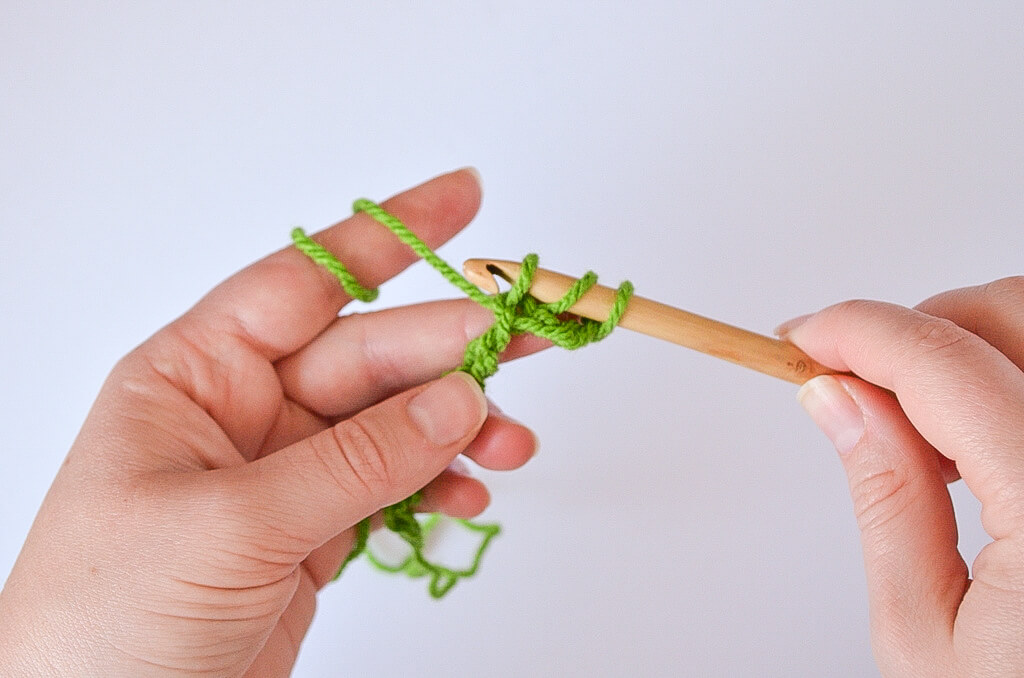
Now you should have 2 loops left on the hook.
YO and pick up a loop in the next chain back bump. YO and pull through 2, ending up with 3 loops on the hook.
Continue doing this until you reach the last chain.
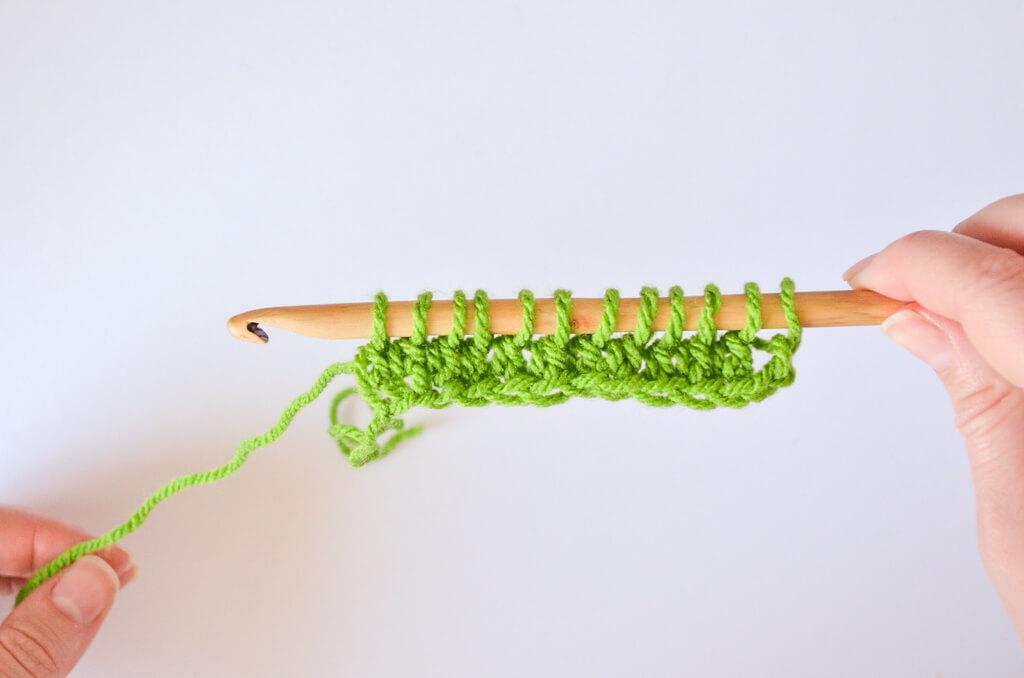
When you have picked up stitches in all the chains, Ch1, then repeat [YO, pull through 2 loops on hook] until you are left with a single loop on the hook to do the return pass.
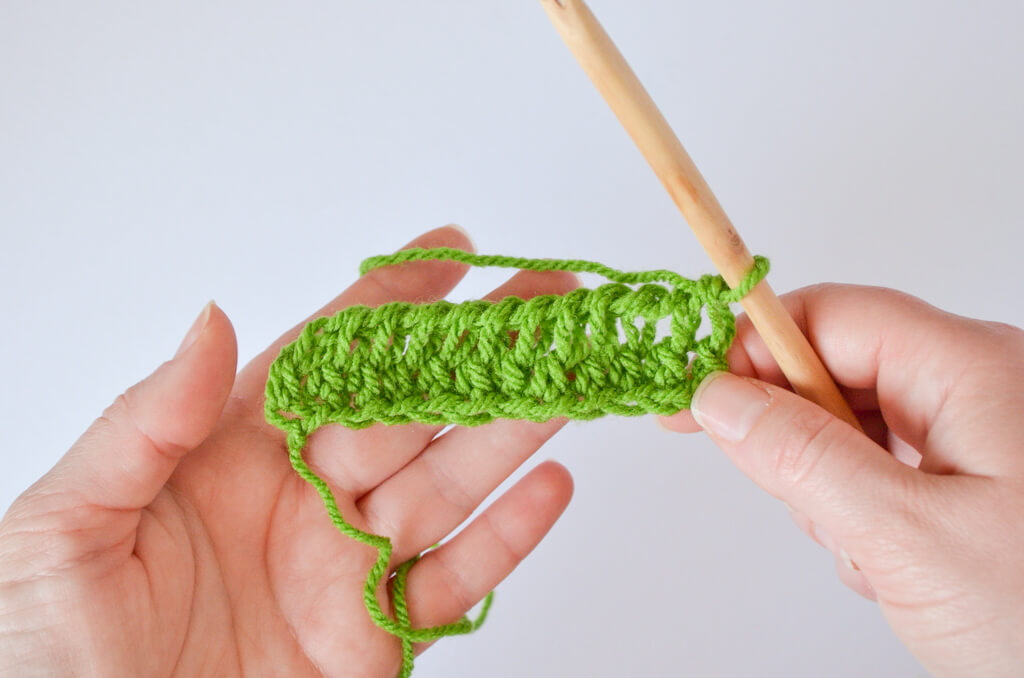
Starting with a regular foundation row
If you want to start with a regular foundation row, you will work in the same way, except you pick up your loops in the stitches on the first row, like this.
Make a foundation row with 10 stitches and 1 last stitch (11 stitches, not counting the first stitch).
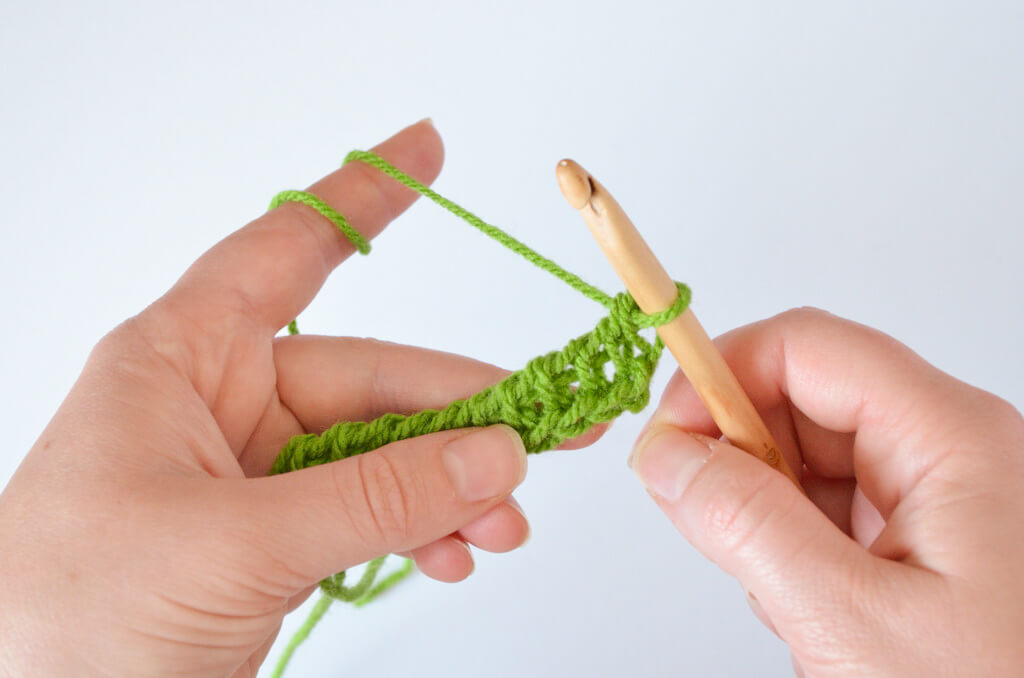
Ch1, YO, insert the hook behind the vertical bar of the next stitch, YO and pull up a loop. YO and pull through 2 loops on the hook. One double stitch is completed.
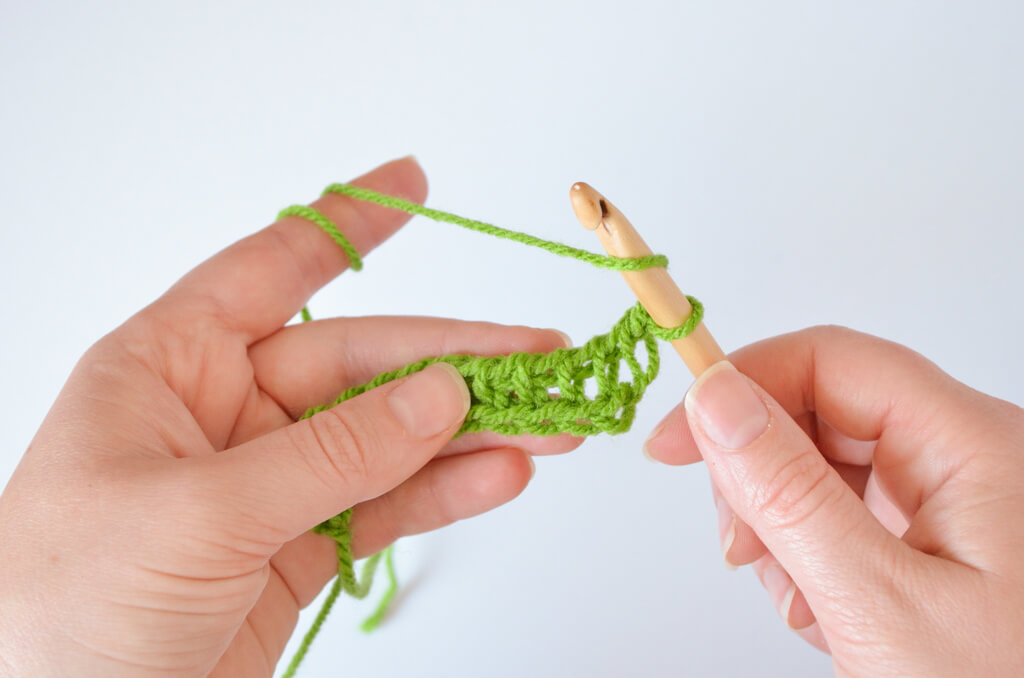
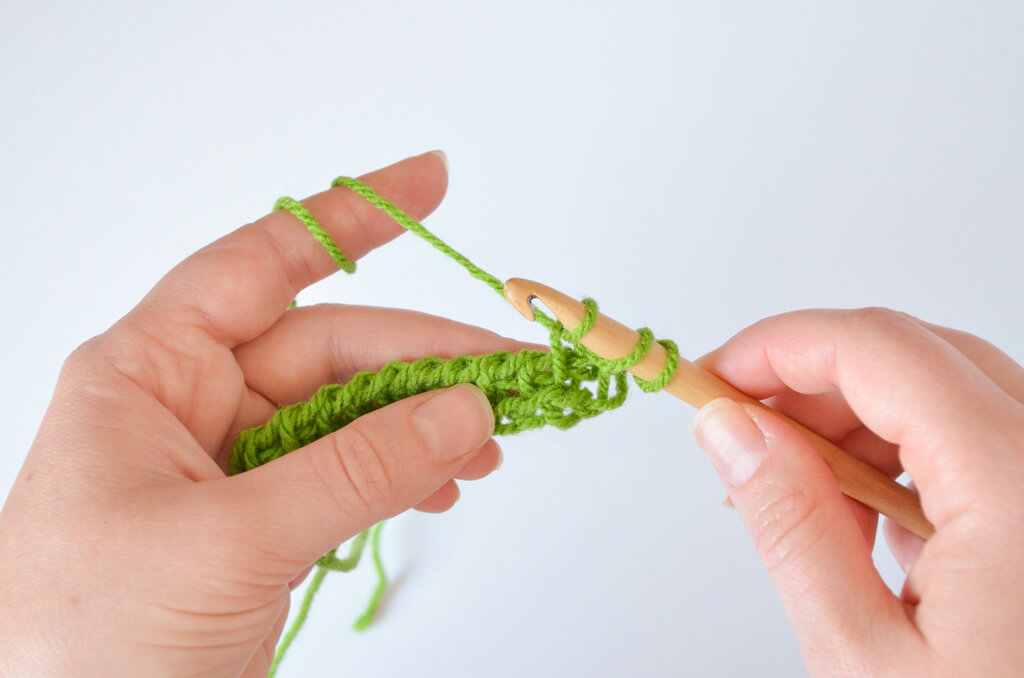
Now you should have 2 loops left on the hook.
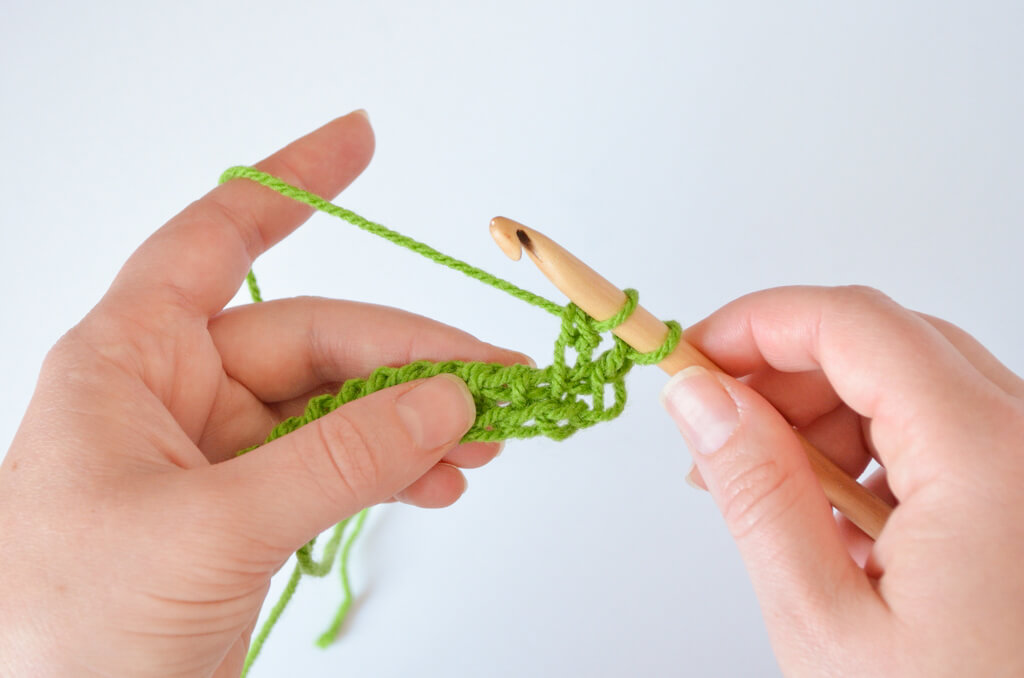
YO and pick up a loop behind the vertical bar of the next stitch. YO and pull through 2, ending up with 3 loops on the hook.
Continue working like this until you have 11 loops on the hook.
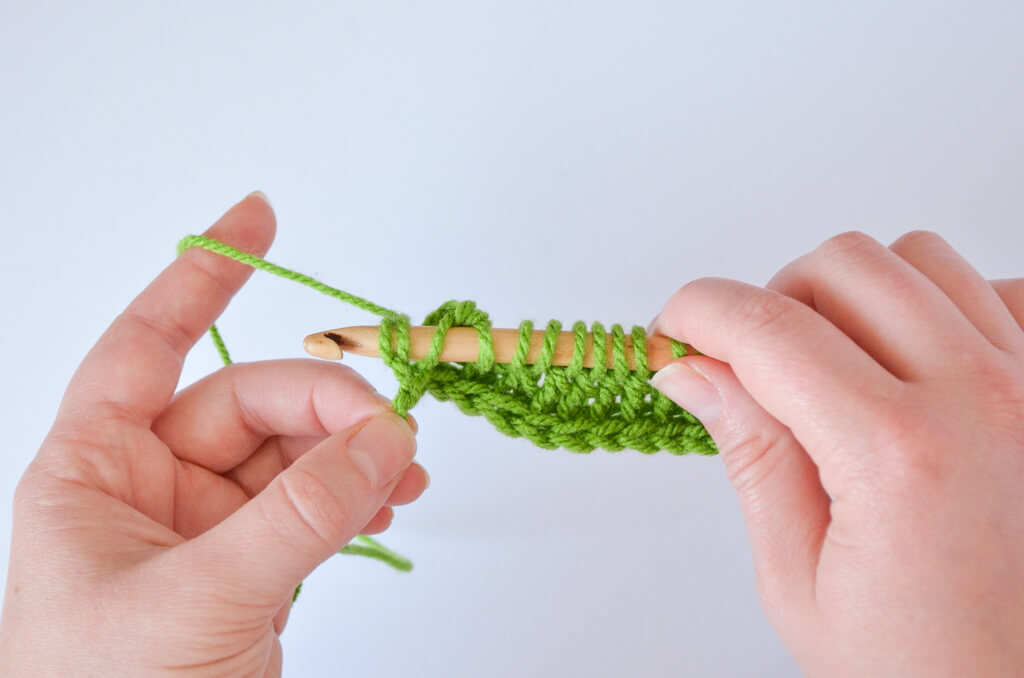
YO and insert the hook behind the 2 vertical bars at the end of the row to make the last stitch. YO and pull through 2. Now you should have 12 loops on the hook.
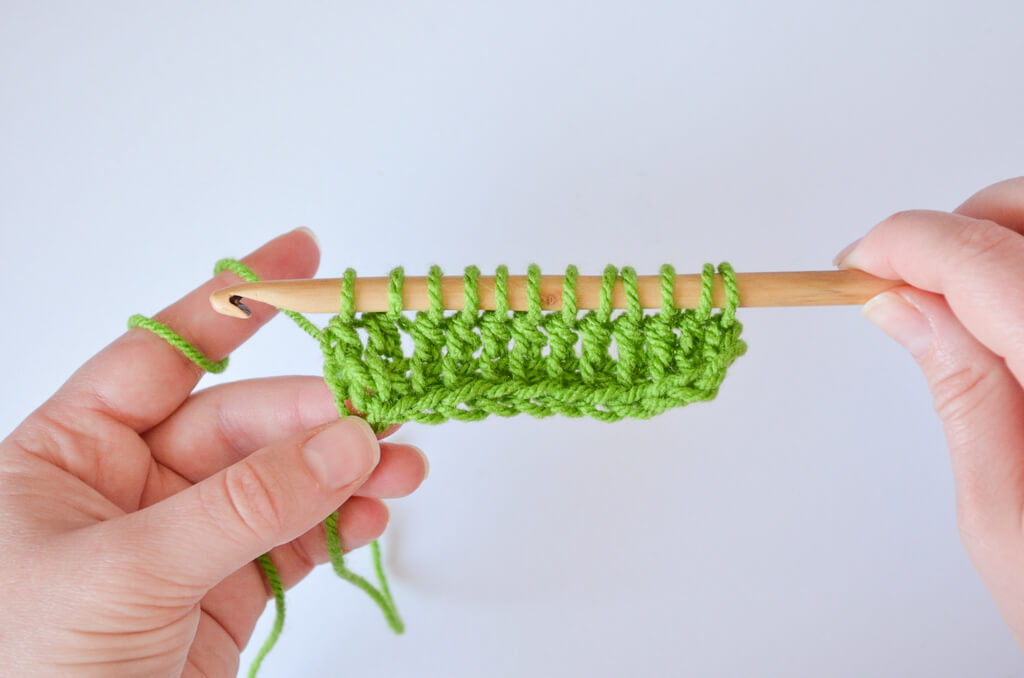
Ch1, repeat [YO, pull through 2 loops on hook] until you are left with a single loop on the hook to do the return pass.
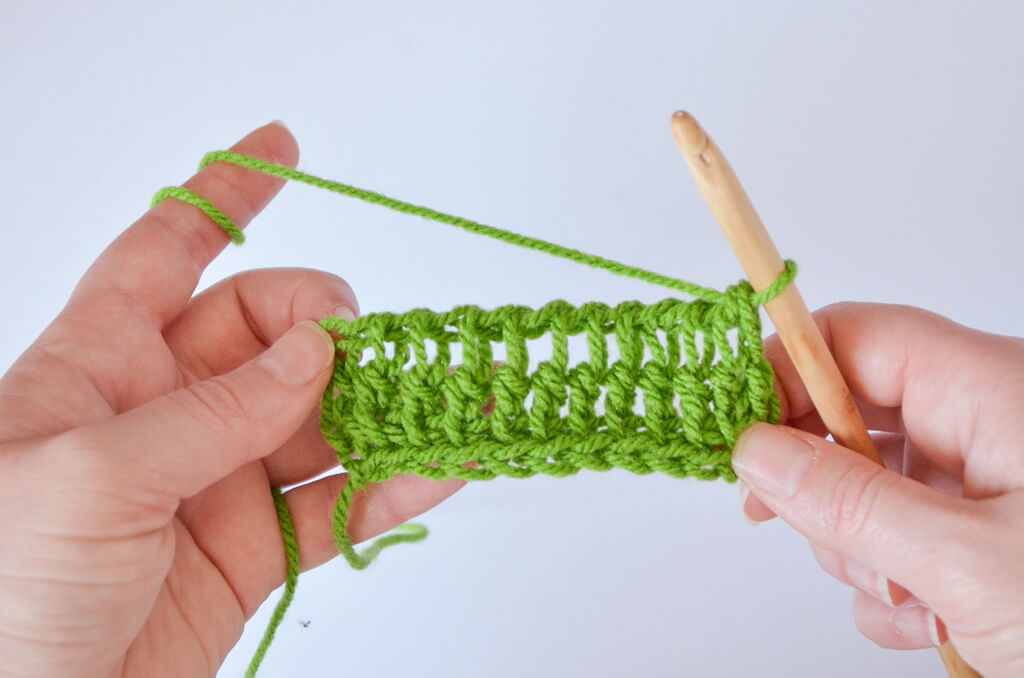
Second row of Tunisian double stitches
To continue the pattern, regardless of which method you choose for the foundation row, you always start with a Ch1.
Then YO, insert the hook behind the top vertical bar of the next stitch on the row below and pull up a loop. If you are working into simple stitches, there is only one vertical bar to work into.
YO and pull through 2 loops on the hook to complete the forward pass of the first double stitch.
Continue with yarn-overs and picking up double stitches to the end of the row.
At the end of the row, YO, insert the hook behind the two vertical bars on the top part of the last stitch and pull up a loop. YO and pull through 2 loops on the hook. Ch1, then continue with the regular return pass: repeat [YO, pull through 2 loops on the hook] until only 1 loop remains.
Continue repeating this pattern until your project is the desired length.
Binding off Tunisian double stitches
Binding off these stitches is not much different from Tunisian simple stitches.
You no longer Ch1 at the beginning of the row, but insert the hook behind the top vertical bar of the first stitch. YO and pull a loop through both loops on hook.
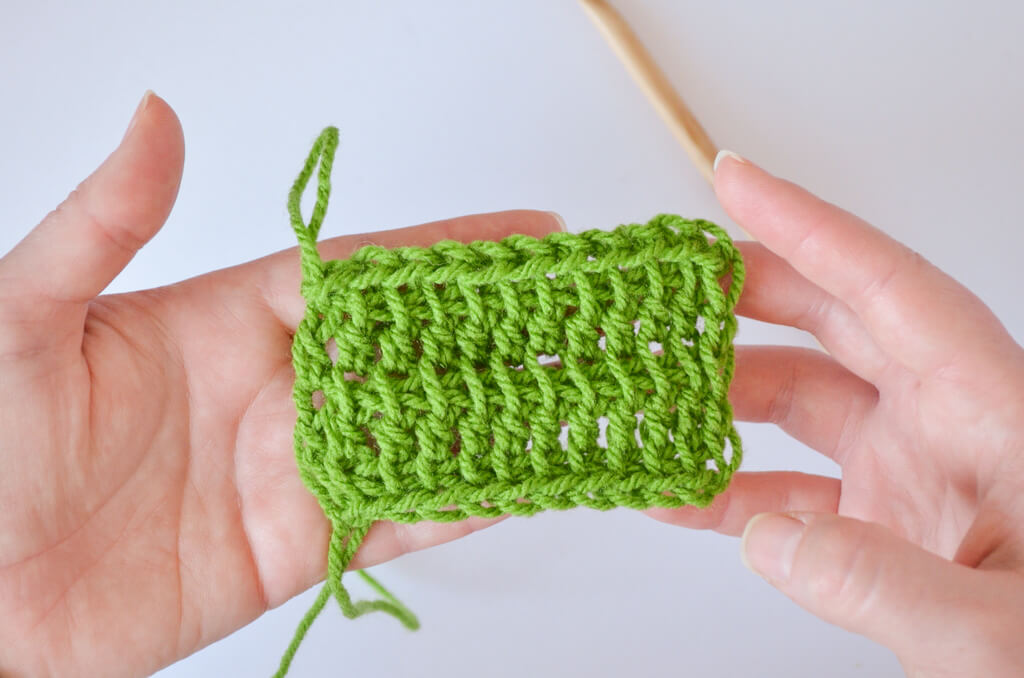
Continue this until the end of the row, which should give an elegant finish to the top of your project.
The back of the work will look like this, with horizontal bars and vertical bars.
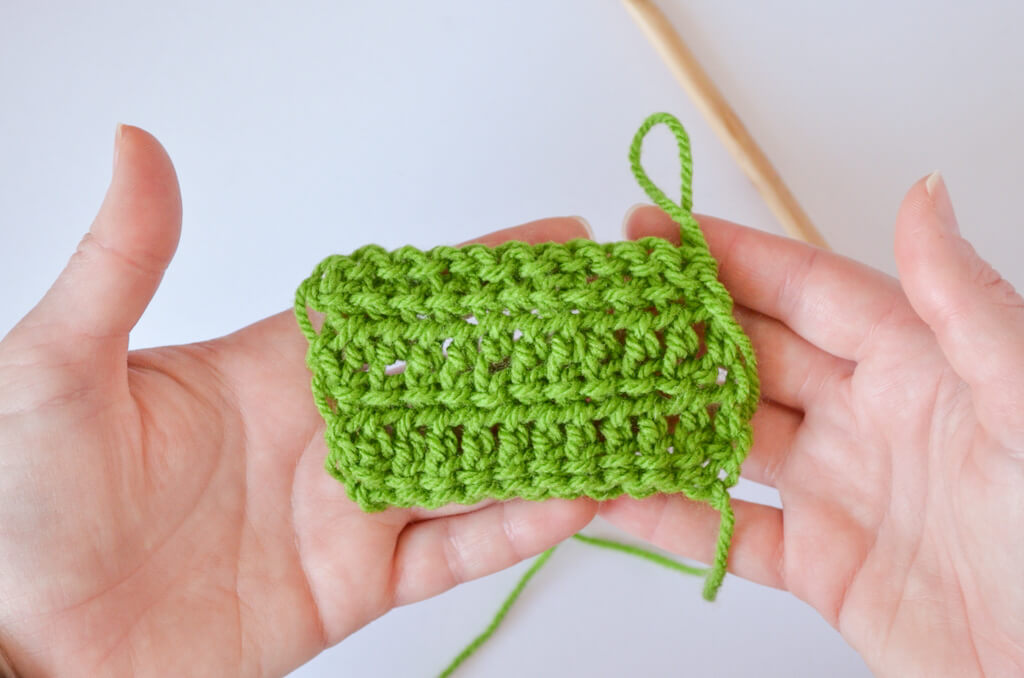
Note the different back of the fabric, when comparing with simple stitches, for example, where you have only horizontal bars on the back.
Variations
There are different ways of making double stitches, just like with any other Tunisian crochet stitch. These will give your fabric a different appearance.
You may choose to make extended stitches instead of Tunisian double stitches. I have a separate tutorial for this stitch.
You could work into both the top vertical bar and the front horizontal bar to make a flatter fabric.
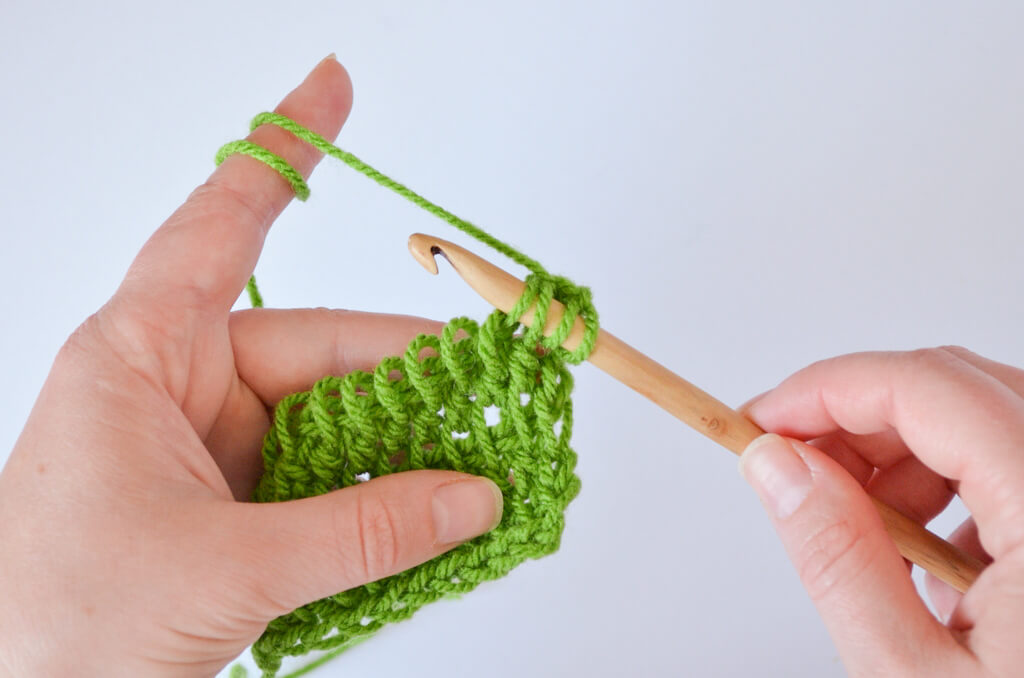
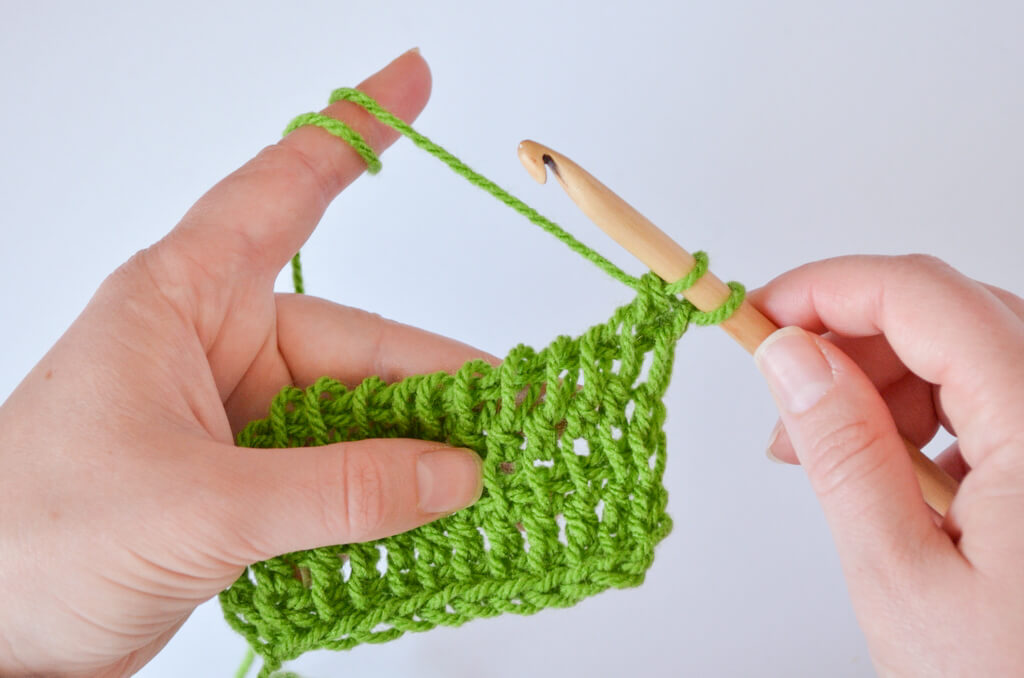
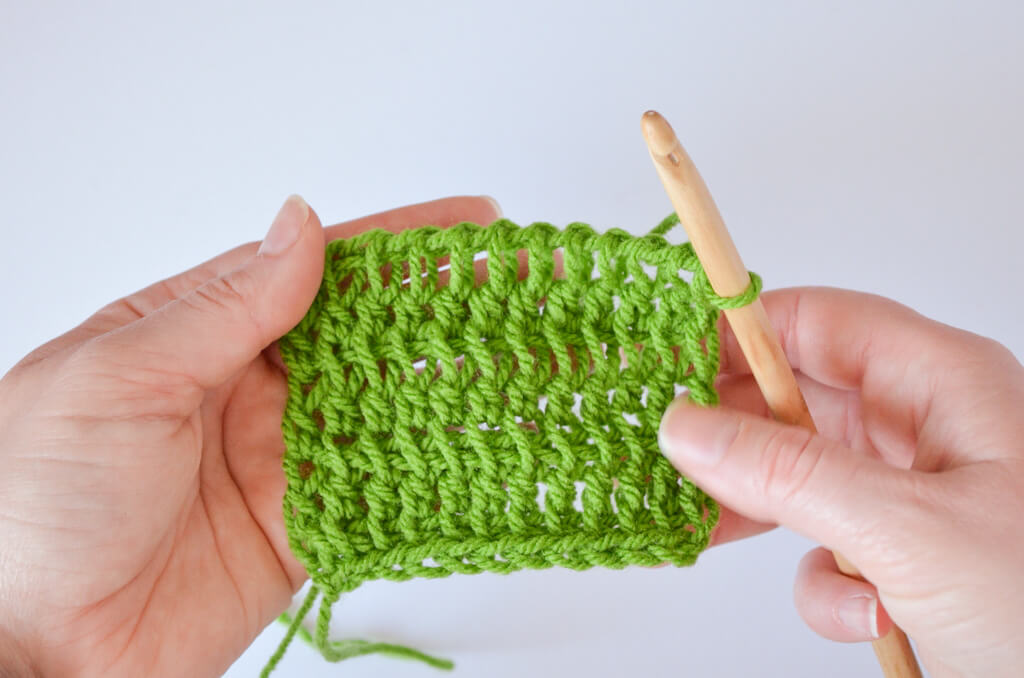
Tunisian double stitches don’t tend to curl, but these have somewhat fewer bumps on the back of the fabric, making them smoother. These have an equivalent in simple stitches, which also make a flat fabric.
You could make the stitches by inserting the hook as if to make knit stitches, which turns the loops towards the front of the work, but also creates a bumpier fabric.
You could also make reverse double stitches, which will look on the front of the fabric as the back of regular double crochet stitches, with ridges in between.
Video with three ways of making Tunisian double stitches
If you would rather follow along with video instructions, you have here three ways of making double stitches, plus two more right at the end. Check them out.
Projects with Tunisian double stitches
There are many projects you could make with double stitches, just like with simple stitches. You can make shawls, wraps, sweaters, blankets and other home décor objects. Your imagination is the limit.
You can easily shape items made with Tunisian double stitches with increases, as you can make multiple stitches in one, and decreases, for which you can use clusters, just like in regular crochet, except you finish the cluster on the return pass.
You could also try filet crochet with the double stitches. I’ll have a separate article specifically about filet Tunisian crochet.
Let me know in the comments if you know of any patterns that use Tunisian double stitches and I will make a list below.
I hope this article was useful to you and that you will check out other tutorials and patterns using Tunisian crochet that I have published here on the blog.
If you want to know when I publish more tutorials and patterns, please sign up to my email updates below and you’ll also get a free pattern.
I’ll see you soon.
Hugs,
Andrea
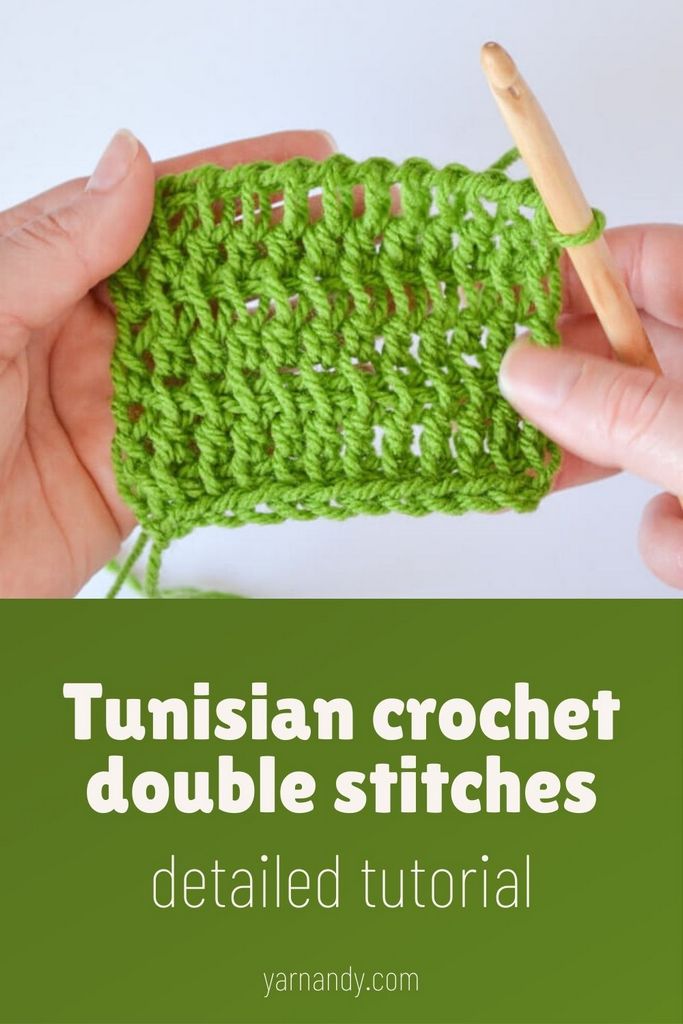

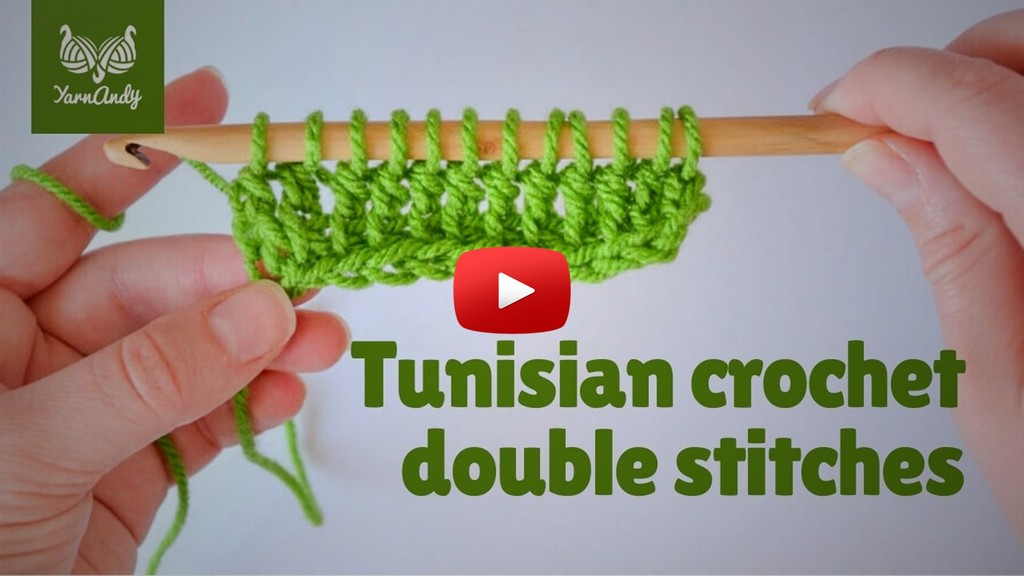

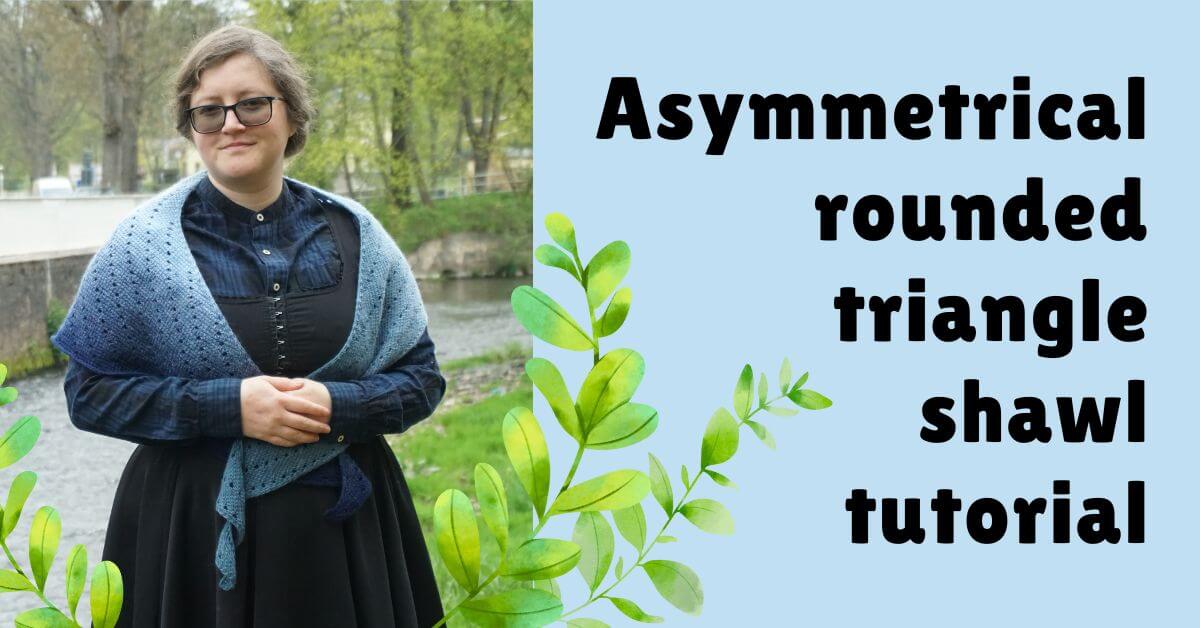
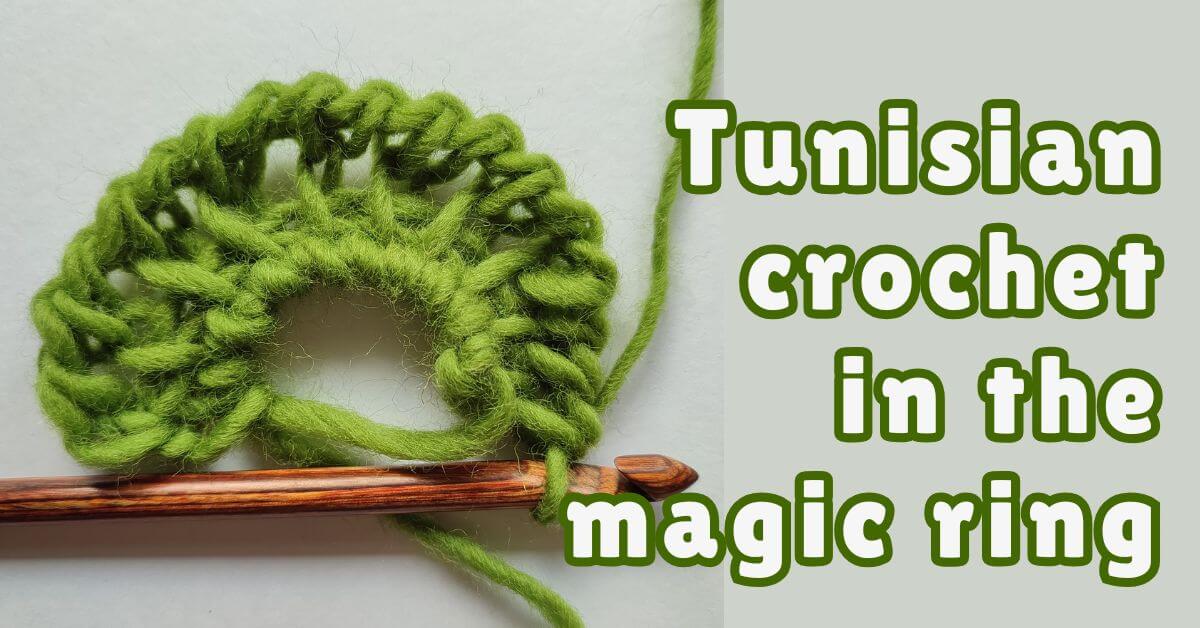
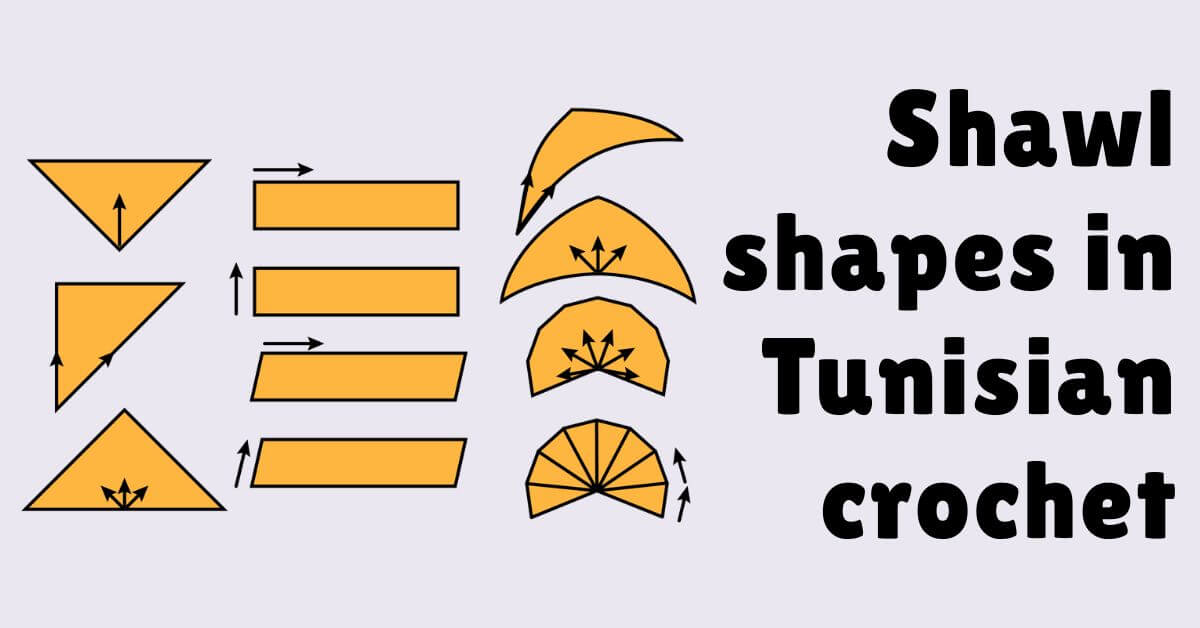
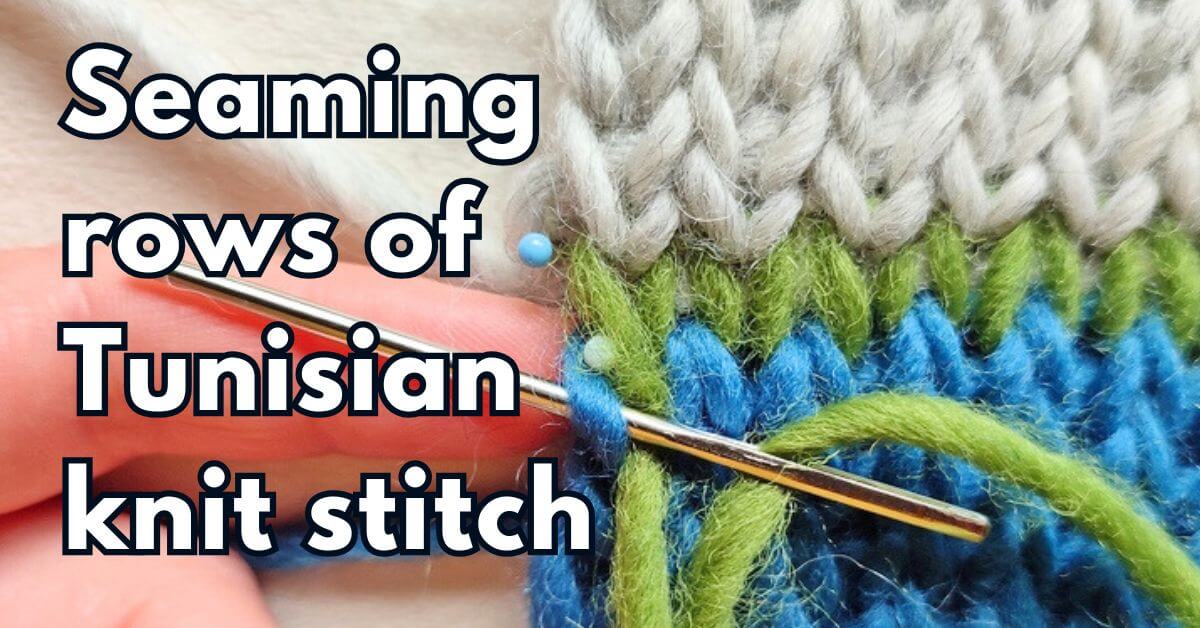
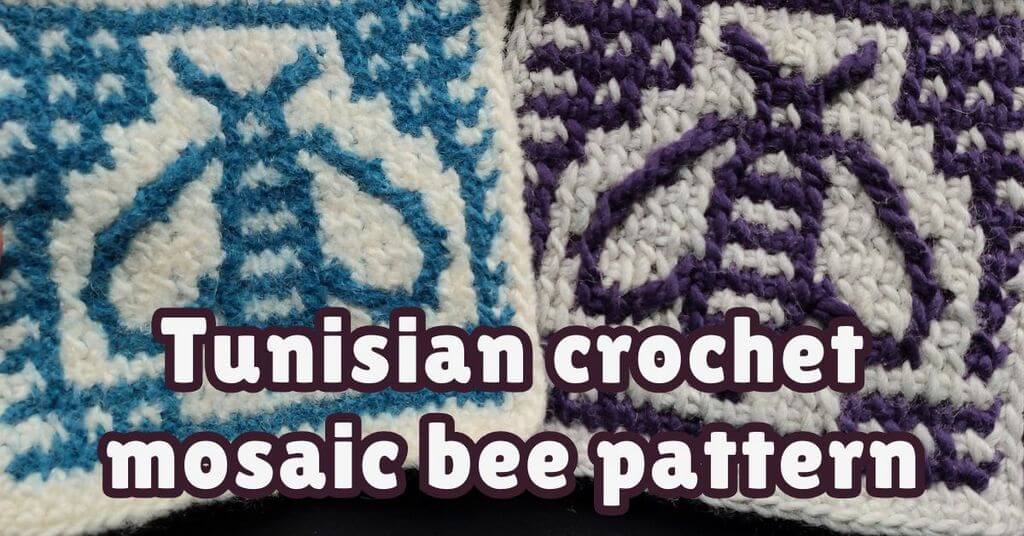
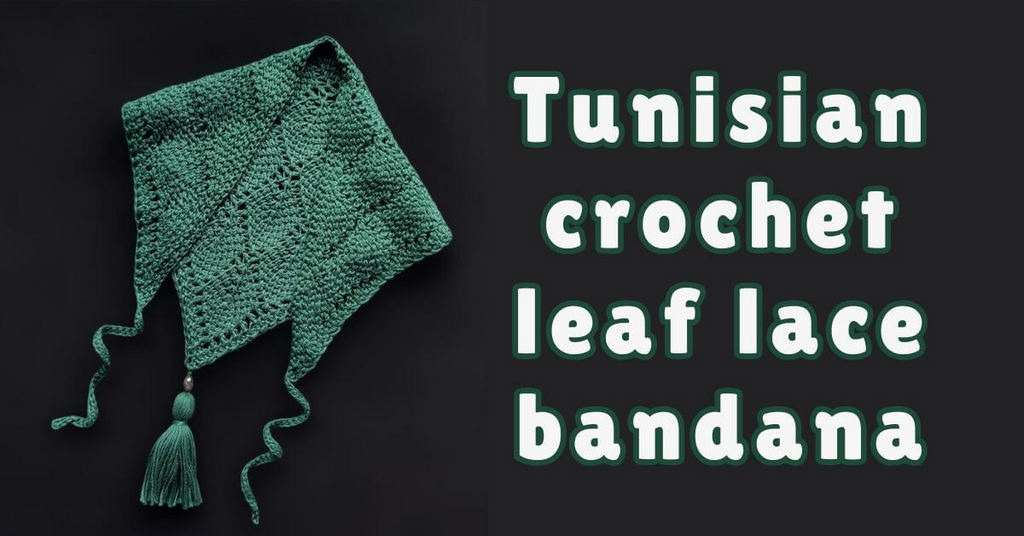
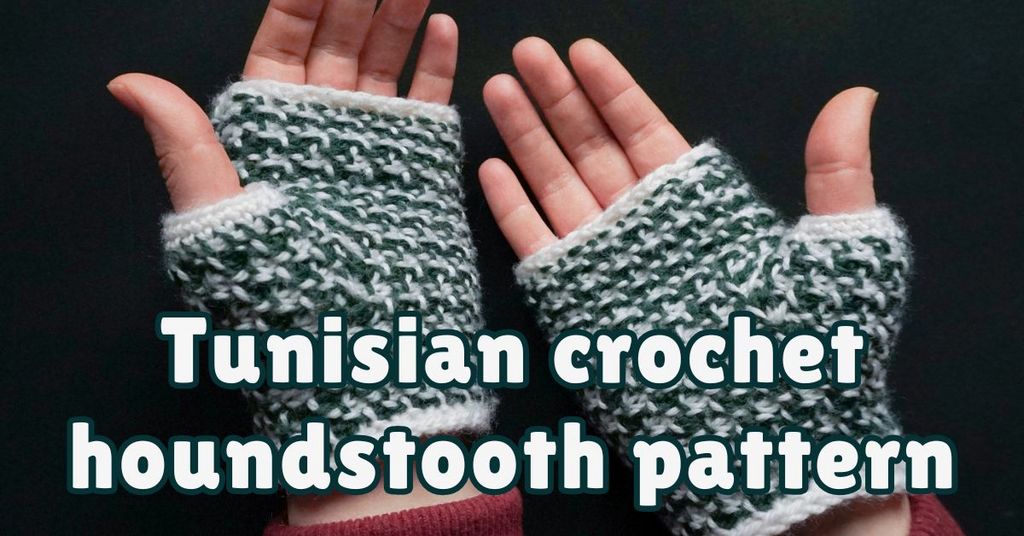
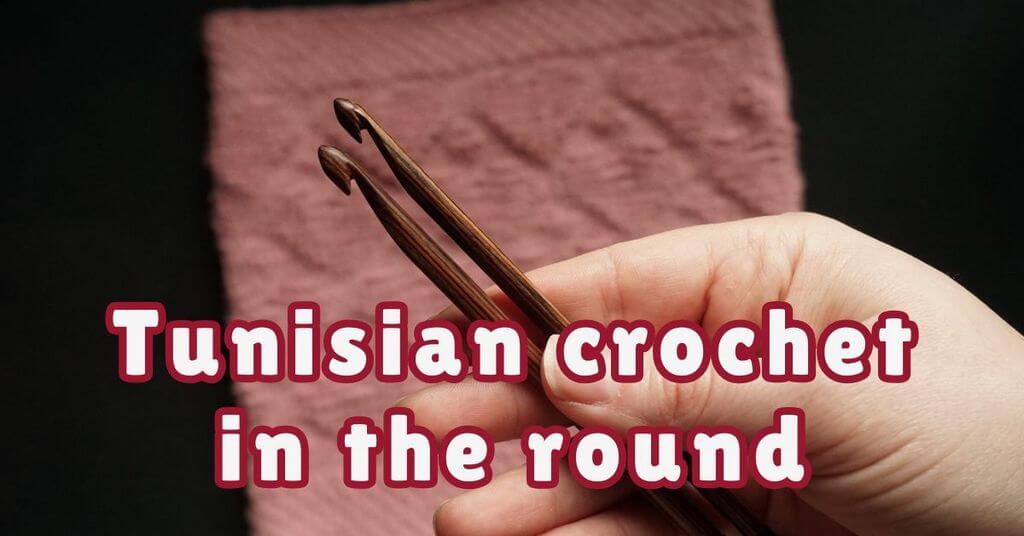


2 thoughts on “How to make Tunisian double stitches”